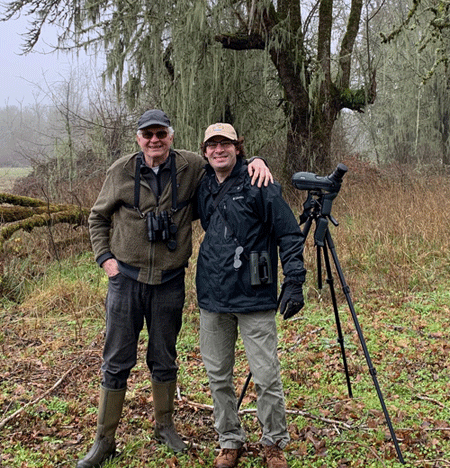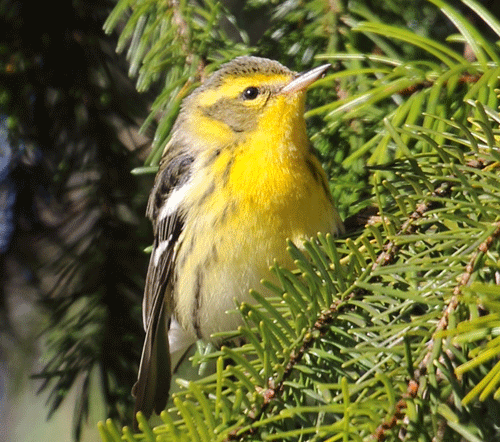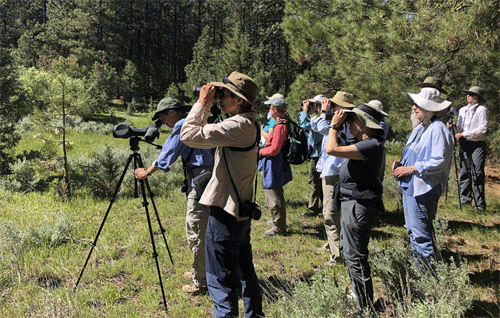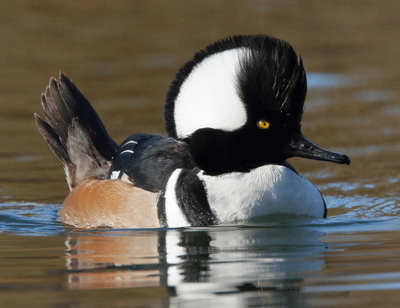Bird Surveys
Counting on the Birds!
Throughout the year there are many organized bird counts in our region. The scope ranges from national to regional, and the format from defined protocols to whatever you can count. These surveys are examples of citizen science, a collaboration between scientific researchers and the general public. When you participate, you help provide data that will contribute to further understanding bird populations, their distribution, and any population changes. Two bird counts are held locally: the Christmas Bird Count (CBC) for the Corvallis area and the North American Migratory Bird Count (NAMC) which covers Benton County.
Christmas Bird Count

Corvallis CBC
2024 Results
The 64th Corvallis Christmas Bird Count (CBC) took place on December 17, 2024. The weather was wet all day, with a 24-hour rainfall accumulation of 0.68 inch at the OSU Hyslop Weather Station. Temperatures recorded at the Corvallis Airport ranged from 46–54 degrees Fahrenheit throughout the day, and winds were generally from the south at 5–23 miles per hour, with gusts up to 28 miles per hour. These conditions were less than ideal for finding birds, and the CBC results bear this out. The 61 field observers and feeder watchers counted 63,816 birds of 120 species on the count day. For comparison, the corresponding numbers for the 2023 CBC were 92,531 birds and 126 species.
As is typical for the Corvallis CBC, the most abundant species counted in 2024 were Cackling Goose (18.3%) and European Starling (18.0%). They were followed by Green-winged Teal (15.1%), Mallard (5.6%), Red-winged Blackbird (3.8%), and Northern Pintail (3.2%).
New records were set for the number of birds seen in several species, including Tundra Swan (1,491 vs. a previous high of 1,423), Least Sandpiper (452 vs. 100), Northern Harrier (143 vs. 135), and Barn Swallow (5 vs. 3). Barn Swallows are rare in the Willamette Valley during December, although they were observed in three previous Corvallis CBCs, most recently in 2011.
In addition to the 120 species seen on the count day, field observers recorded 8 species during the count week, which ran from December 14–20, but not on the count day: Cinnamon Teal, Eurasian Wigeon, Long-billed Dowitcher, Greater Yellowlegs, Pileated Woodpecker, Red Crossbill, Tricolored Blackbird, and Black-throated Gray Warbler. Tricolored Blackbird is rare for the Corvallis CBC, having been seen in only five previous years. Black-throated Gray Warbler is rarer still; it was observed only once before, in 1991.
Download 2024 CBC results
View the results of this or any other CBC on the National Audubon Society CBC website
The 2025 CBC will be held on December 16. Contact Bev Clark for information.
History
The first Corvallis CBC was held on December 26, 1912, but the next count was not held until 1962. The CBC has been held every year since then. The Corvallis CBC is traditionally held on the Tuesday before Christmas. Everybody is invited – and participation is free.
Corvallis count sectors
The Corvallis count circle has a 7.5-mile radius centered near the Corvallis airport and is divided into 13 sectors, with a team of 3-6 individuals assigned to each sector by Bev Clark (see map link below). Team leaders for each sector will make arrangements with the rest of their group for a meeting place and time (usually between 7:00 and 7:30 am the morning of the count. Participants should bring cold- and wet-weather gear, binoculars, a spotting scope if you have one, and a notepad and pencil or electronic recording device. A field guide, camera, snacks, and thermos with a hot beverage are also recommended. Contact Bev Clark.
Corvallis CBC map
Bird feeder count instructions
Record the number of each species you observe at your feeders, in your yard, and in the air above your yard on the Count Day only. For each species, record only the greatest number of individual birds seen at one time; do not tally all birds seen during the day as that is likely to result in counting the same birds multiple times. If you observe a species not listed on the checklist, please add it at the end of the list. If you see any unusual birds at your feeders or in your yard 3 days before or 3 days after the Count Day that you don’t see on the Count Day, please make a note on the back of this form, but do not include them in your Count Day total. If you have any questions, contact Bev for more information. To download the bird feeder checklist, click here.

Airlie-Albany CBC
2025 Results
Fifty participants, including 7 feeder watchers participated in the 2025 Airlie-Albany CBC on January first. They logged 186 hours over 458 miles. There were 43,000 recorded individuals. Our species count of 125 is one of the highest in 27 years. Rare species (encountered on fewer than 20% of previous counts) included a Redhead drake and a Western Grebe found by M. and B. Cannon and a Lewis’s Woodpecker found by Lars Norgren. The only common species (>80% of previous surveys) not observed this year was the Brown-headed Cowbird. We had some lowland field flooding that reduced the number of blackbird sightings in general.
Compiled by Misty Cannon
Airlie-Albany count sectors
The count circle for the Airlie-Albany CBC includes Corvallis north of Crescent Valley High School, most of Albany, E.E. Wilson Wildlife Area, Luckiamute State Natural Area, Ankeny NWR, the southern outskirts of Monmouth-Independence, and more. If you’d like to participate, especially if you enjoy walking in McDonald-Dunn State Forest, please contact Paul Adamus.
Birdathon!

Participating in a birdathon is an excellent way to learn about migratory species, raise funds for environmental projects, add data to a national survey, and have fun. Since 2001, MWBA has conducted Birdathons for the benefit of Hesthavn Nature Center. Combined earnings are about $80,000, which has funded a solar composting toilet, museum display cases, new flooring, weather-tight doors and windows, and other projects.
Form a team or go solo on the designated weekend, between April 1 and May 30, which MWBA will announce early in the year. This is the peak migration period for birds in the U.S. If you have a conflict in dates, let the coordinator know, and select another weekend during the migration. Ask individuals or organizations to sponsor the team either per species or at a flat rate. Then, bird wherever you are – your backyard, the coast, the mountains, Costa Rica… the sky’s the limit (literally)!
MWBA Birdathon_report_form_2019
If you own a local business, sponsoring a team or individual could generate good publicity. Or your business could sponsor every team at a certain rate. This encourages more people to participate, knowing they already have their first sponsor. Beyond raising funds for Hesthavn, more people may feel they have a personal stake in Hesthavn’s success and, more broadly, in wildlife and nature conservation.
MWBA Birdathon Official Sponsor Form
Contact Birdathon Coordinator
Other Bird Counts
-
-
- Project Feeder Watch – Cornell Lab of Ornithology winter-long survey of birds that visit feeders in local areas. Send your count to Project FeederWatch to help scientists track long-term trends. Anyone interested in birds can participate.
- Great Backyard Bird Count – The next count is Feb. 18 – 21, 2022. More than 160,000 people of all ages join the four-day count to create an annual snapshot of the distribution and abundance of birds.
Oregon Black Oystercatcher Project
-
- – The goal is to provide new information about Oregon population estimates, nesting success, and human disturbance. The surveys are conducted on the North, Central, and South Coast from May to November.
-









